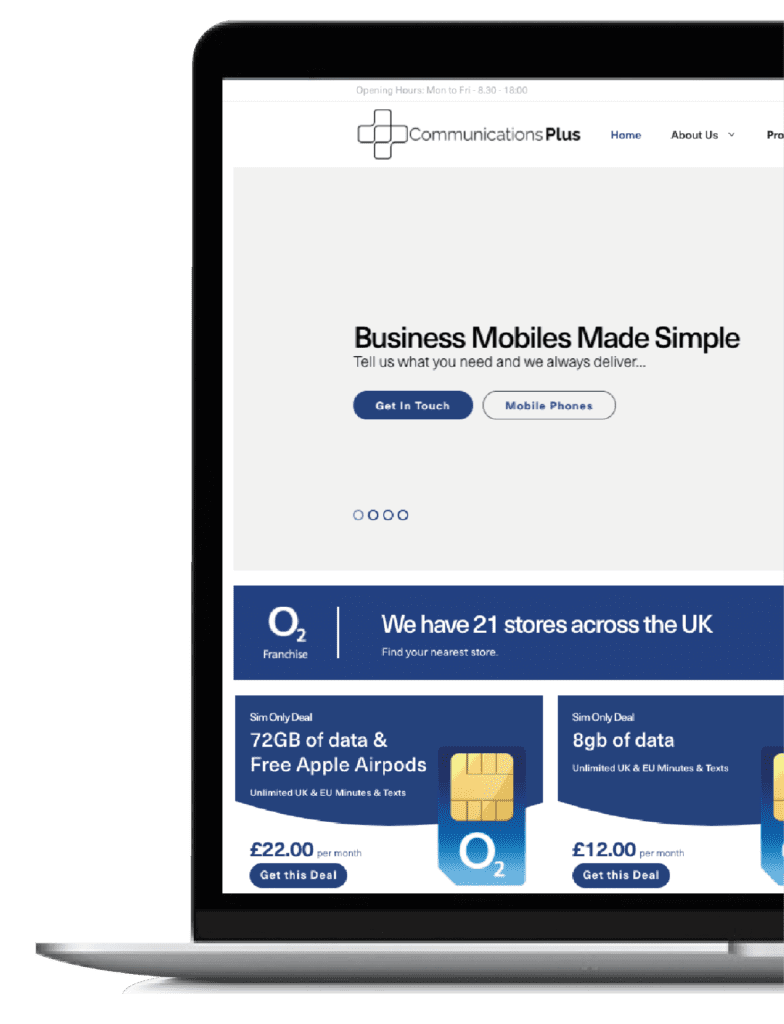Successful businesses rely on communication, so they need the best devices possible.
With remote working on the rise, business mobile phones are vital to maintain productivity and communication outside the office.
Even before COVID-19 changed the way most people work, 61% of global businesses had a remote working policy.
This year, the number of people working remotely long-term is expected to double compared to pre-pandemic numbers.
As mobility increases, businesses need to keep up with modern working styles and provide the necessary equipment and support.
If your business is shifting to remote working, or roles requiring travel and working on the go, then you need to develop your business mobile management capabilities.
Here are eight things to consider when planning business mobile phone management.
1. Compatibility
Before you can implement any kind of mobile management solution, you need to understand how your business uses mobile devices.
If employees are using their own phones there is likely to be a range of devices with various software types across your business using different operating systems and apps.
To make sure your management tools are compatible, ask yourself:
- Which mobile devices are employees using?
- Are these business devices for local use or international?
- Do they have the features you need like long battery life or biometric security
- Are they suitable for use in a range of relevant environments?
- How much do employees rely on mobile internet connections?
- Do you need a unified dashboard for app management and software updates?
- Do you need to build and integrate custom applications?
- Will you have to offer training to employees unfamiliar with your systems?
Once you know which devices are being used and how, you can tailor your management strategies for ease of use and control the impact on employees.
The easiest way to ensure compatibility is to enforce a company-owned mobile device strategy rather than Bring Your Own Device.
2. Costs
You need to factor in expenses like:
- The cost of the device (if provided by the company)
- Monthly usage fees (data, calls, messages)
- Ongoing administration costs (IT support, security)
You need a business phone service plan that suits your needs, from inclusive calls to guaranteed connectivity through either 4G or 5G, or WiFi.
Monthly bills may also include the cost of the handsets if your business provides them for employees.
3. Distribution
How will you deliver devices, and get the right software one those devices for your employees?
You need to figure out the devices and software requirements for each department or job role.
You’ll also need to create a use policy in advance so the guidance is already in place for employees, and have a system prepared for software management and upgrades if you’re expecting business phones to come ready with apps and software.
It may be beneficial to do a test run with a small group to evaluate and fix any issues, then implement the roll-out in measured phases.
Once every employee who needs one has a configured handset, you’ll need to continue managing IT requirements and security compliance.
If you have a strong system in place, it should be easy for you to scale up or down according to your business needs.
4. Policies
Businesses must have some kind of mobile device agreement which employees should familiarise themselves with before gaining access to your network with a mobile device.
In addition to remote device controls, it’s important for the workers actually using the devices to understand individual and corporate responsibilities for acceptable usage.
Your policy should cover things like:
- Password requirements
- Data restrictions
- Application access
- Social media use
- Remote monitoring
- Consequences of violation
It should also state who is responsible for the costs of repairing or replacing a device if it gets damaged in an employee’s care.
Mobile device policies should be integrated into termination policies as well, so that company-owned devices can be recovered and company data and access can be removed from personal devices when an employee leaves.
You’ll need a system for monitoring access and usage in order to enforce your policy.
5. Maintenance
As we’ve discussed, you have to keep an inventory of devices on your network and manage them at every step.
Devices need to be configured, given to users, then maintained and monitored for as long as each person uses each device.
Will you need to configure devices remotely to control mass software updates?
Can you manage a limited number of devices or is your system flexible?
If you need scalability and prefer to control access and upgrades remotely, it’s best to use a mobile device management platform.
6. Support
Do you have the technical infrastructure to support the use of mobile devices throughout your business?
If you don’t provide adequate tech support, users may go elsewhere for unauthorised upgrades or repairs.
But if you do want a fast turn-around on troubleshooting, your IT helpdesk could get overwhelmed.
Can you lighten the workload for your IT department by using a mobile device management application?
It’s easier to provide dedicated support for business phones rather than personal devices, because you choose which operating systems and device features you need and limit the range of support required.
It’s also easier to mitigate the risks of tech disruptions by using a platform with ultimate control over the devices and their software.
7. Upgrades
How do you make sure that every device is running properly, with setting updates and software upgrades installed and activated as soon as required?
Relying on employees to do it themselves is risky, because delayed updates could lead to security breaches and access issues that affect their ability to work.
It’s better to have a remote cloud-based platform that can push automatic updates to every device connected to the network.
When it comes to choosing handsets, you should choose business phones with longer life cycles and OS support, specifically designed for enterprise use to last much longer without becoming obsolete.
8. Security
Security affects everything else in your management plan, so it’s a major concern when using mobile phones for business.
You need to protect your company’s data and client or customer data from getting into the wrong hands.
In the UK, 46% of businesses experience cyber attacks, with 19% losing data or money as a result of the breach.
To prevent security breaches from cyber attacks, you need strong security practices for your business devices, such as:
- Data encryption
- Strong passwords or PINs
- Biometric authentication (e.g. fingerprints)
- Unrestricted access alerts
- Reputable applications
- Device tracking
- Remote data wiping
- Containerisation
- Proactive compliance
It’s important to be able to remotely lock a device and delete sensitive information from it, should the device be stolen or lost.
However, you can’t just rely on reactive security measures.
Educate your employees with security training, and carry out regular device audits to check whether your security measures are working or if there are any weaknesses you need to fix.
How to get help with business mobile phone management
There’s a lot of pressure for small to medium enterprises to secure their business devices and monitor them to keep protections up to date.
Investing in enterprise mobile solutions isn’t a one-size-fits-all step. It’s the kind of thing you need to get right the first time, so it’s worth seeking expert advice.
It’s a good idea to contact a business mobile phone provider to discuss the best handsets, phone plans, compatible software, and tech support for your business requirements.
Work through the considerations above and you’ll soon have a thriving business mobile phone plan.











